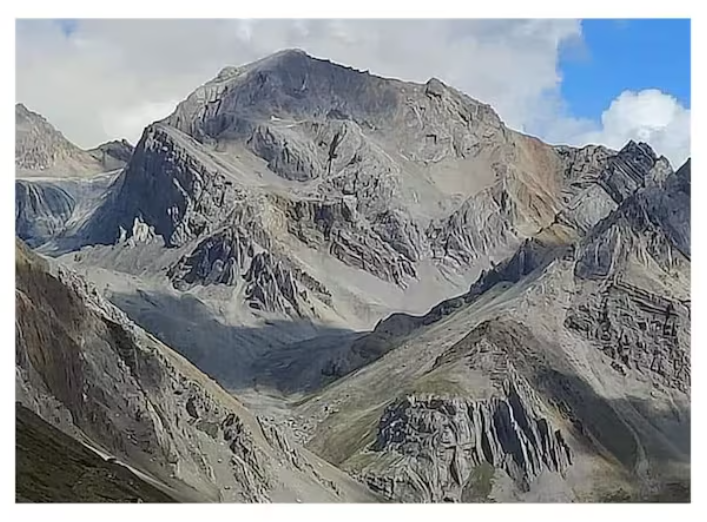The complete disappearance of snow this year is being attributed to scanty rainfall and patchy snowfall in the upper Himalayas over the past five years

For the first time in recorded history, Uttarakhand’s Om Parvat was entirely devoid of snow last week, raising concerns among visitors about the unusual event. Pictures shared by neighbouring residents showed the usually snow-clad mountain appearing barren.
According to an official quoted by news agency PTI, the lack of snow could affect tourism in the area if the situation persists. However, a snowfall on Monday night restored the snow cover on Om Parvat.
Om Parvat, situated in Vyas Valley at an elevation of approximately 14,000 feet, is a major tourist attraction. Its snow naturally forms a design resembling the Hindi symbol for ‘Om’, which is how the location got its name.
A visitor expressed their disappointment at the sight of the mountain, known for being permanently snow-capped, completely barren when they visited on August 16.
Urmila Sanwal, a resident of Gunji village, showed pictures she had taken of the snowless hill and remarked, “The Om-shaped pattern was barely visible without any snow,” PTI quoted her as saying.
Dhan Singh Bisht, who oversees the Adi Kailash Yatra base camp in Dharchula, said, “In my 22 years working with the Kumaon Mandal Vikas Nigam, this is the first time I have seen Om Parvat completely without snow.” Previously, Om Parvat’s snow would melt by 95-99 per cent, but this year it melted entirely, according to Bisht.
What led to the snow disappearance at Om Parvat?
The complete disappearance of snow this year is being attributed to scanty rainfall and patchy snowfall in the upper Himalayas over the past five years.
Locals added that another contributing factor could be the significant increase in tourist numbers since Prime Minister Narendra Modi’s visit to Jolingkong in October last year, which is disturbing the ecosystem of the mountain.
Uneven weather in the coldest places in India
Earlier this year, an unusual weather event linked to climate change caused the cancellation of all flights to and from Leh, Ladakh. The cancellations were due to a decrease in air density, which made it impossible for the flights to operate.
The grounding of flights was a result of unexpectedly high temperatures — an uncommon phenomenon considering Leh’s altitude of 11,000 feet, where winter temperatures can drop as low as -20 degree Celsius.
Article Credit: business-standard